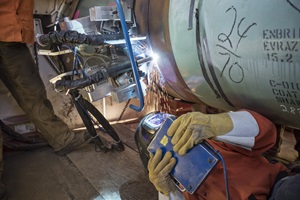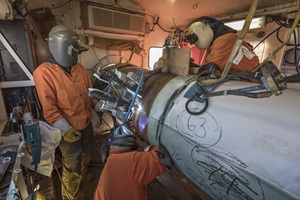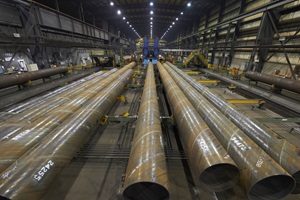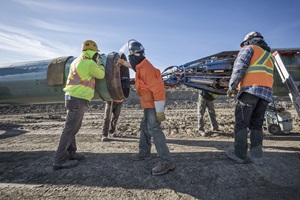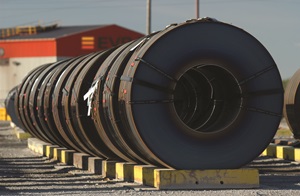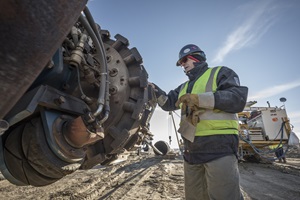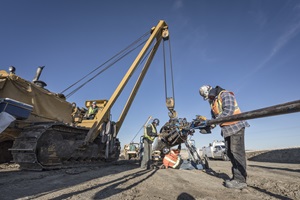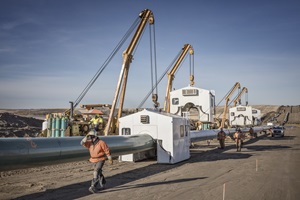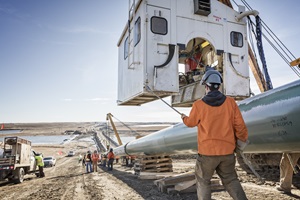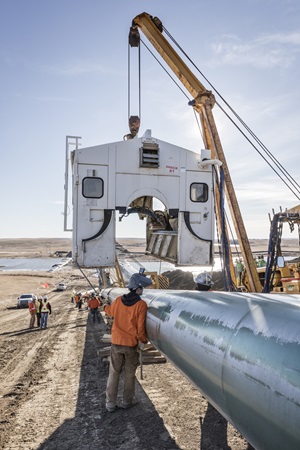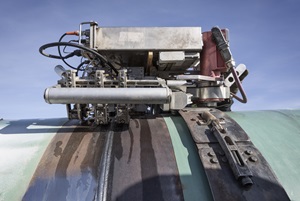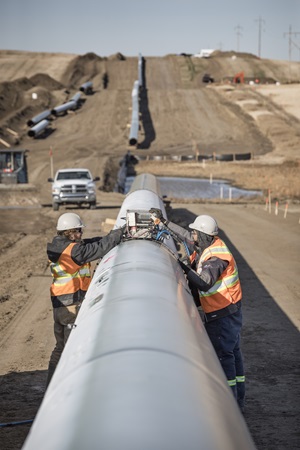Welding’s innovative ‘arc’ integrated into Enbridge’s Line 3 Replacement Program
Pipeline project benefits from 50 years of welding engineering and pipe design innovation
Talk about innovation with any welding enthusiast, and the sparks really start to fly.
“I used to work in a pipe mill. I have a welding engineering background. I’ve worked construction my whole life. I absolutely love this stuff, and sometimes I take it for granted that everyone has seen this process and knows about the advancements that have been made,” says Andy Duncan, Technical Services Manager with Enbridge’s Major Projects group.
“I’m very, very confident in saying that we are using the best available welding technology to industry,” adds Duncan, “and that we go well beyond the minimum requirements of existing codes and standards, wherever we build pipelines.”
Enbridge’s Line 3 Replacement Program (L3RP), the largest project in company history, will replace 1,031 miles of our existing Line 3 crude oil pipeline from Edmonton, Alberta to Superior, Wisconsin.
And for all of those 1,031 miles of pipe being assembled in Alberta, Saskatchewan, Manitoba, North Dakota, Minnesota and Wisconsin, the new Line 3 will benefit from more than 50 years of welding engineering and pipe design innovation.
In the pipe mill, Enbridge’s L3RP supplier uses a Double Submerged Arc Welding (DSAW) process to create strong seam weld joints on either helical seams or straight seams.
The pipe steel itself is made of 96% recycled metal, including tons of Minnesota scrap steel for the Line 3 replacement pipeline. This alloy is not only a greener product, but also represents excellent chemistry for line pipe.
Image gallery: Pipeline welding technology
In the field, crews working on major projects like the L3RP join together segments of pipe with girth welds, using the Gas Metal Arc Welding (GMAW) process. Qualified welders operate automated welding units—one that performs an initial weld from the interior, another that completes the work from the exterior.
“The internal bug just keeps moving down the line, and the fill-and-cap passes are done in portable shelters or ‘shacks’ that protect crews from the elements and help ensure a quality weld,” says Joel McKim, a senior construction specialist on the Line 3 replacement project.
“There might be five or six shacks following the internal bug, and they just keep hopscotching down the line once they finish a weld.”
As for the inspection process, weld quality in the pipe mill is examined by the manufacturer using automated ultrasonic devices. Enbridge inspectors audit those results.
Out on the pipeline right-of-way, an independent third party tests all welds, primarily using ultrasonic technology, with Enbridge auditors reviewing all of the scans as a second pair of eyes on the initial evaluations.
Notes Duncan: “Enbridge also has an internal requirement that a certain percentage of our girth welds out in the field are delay-inspected—for enhanced quality assurance.”




